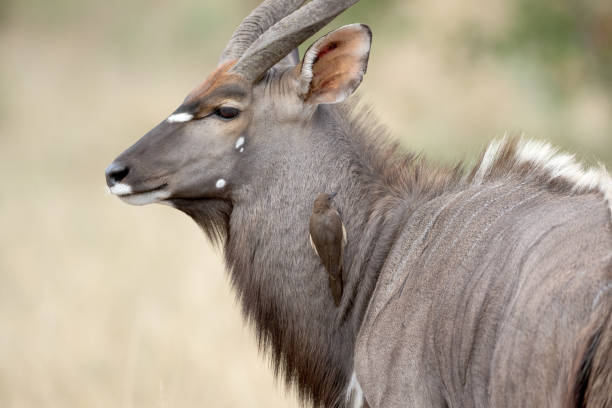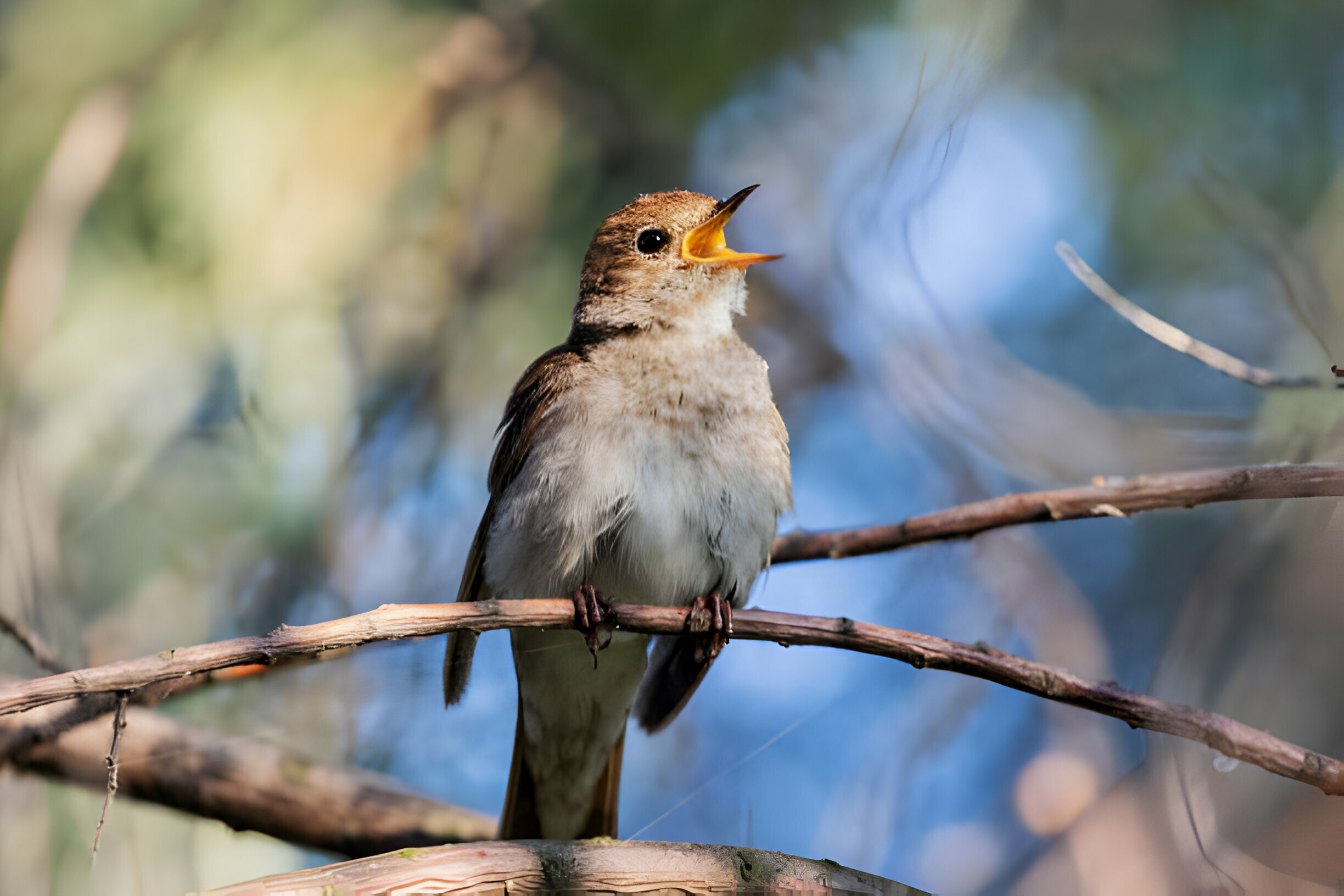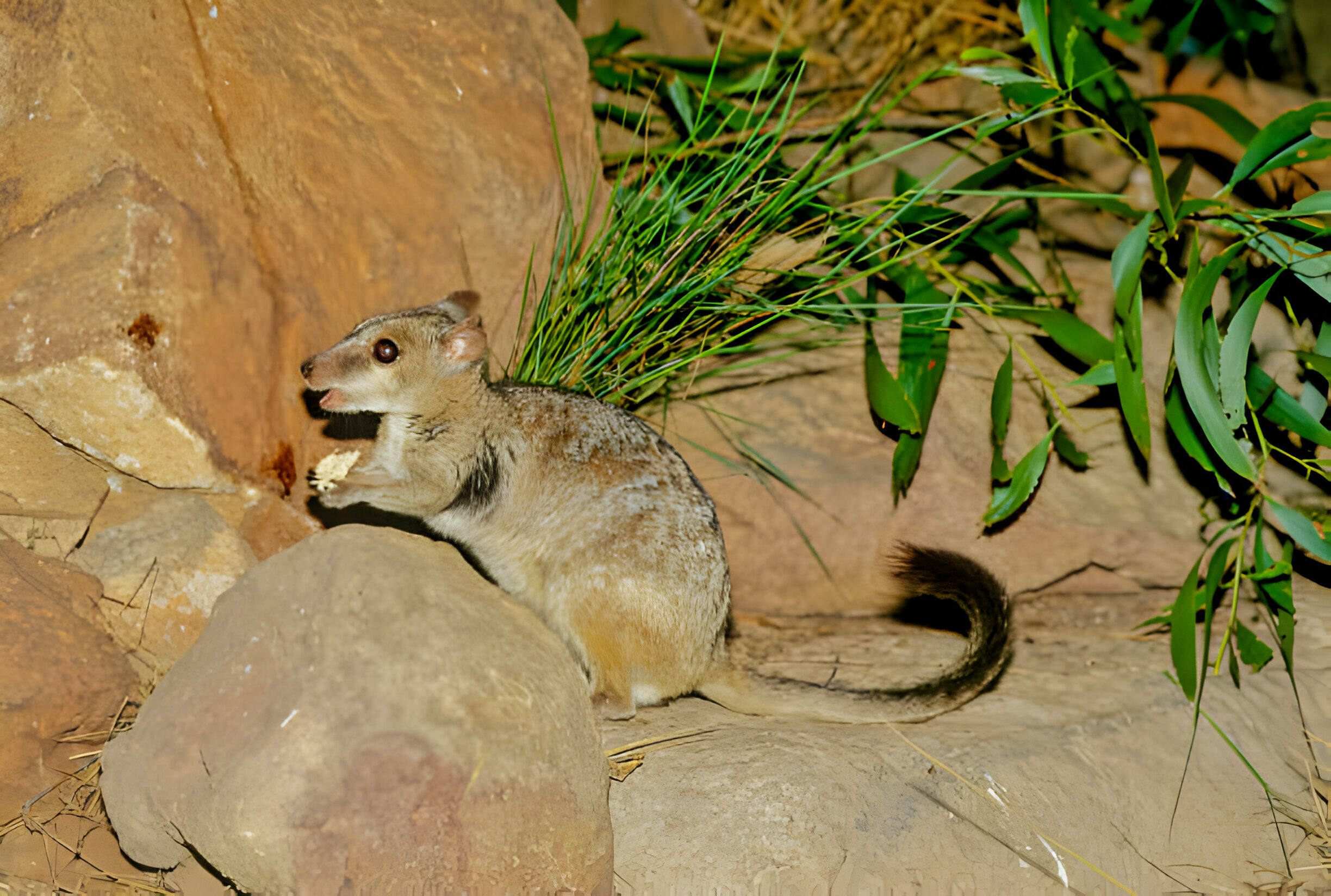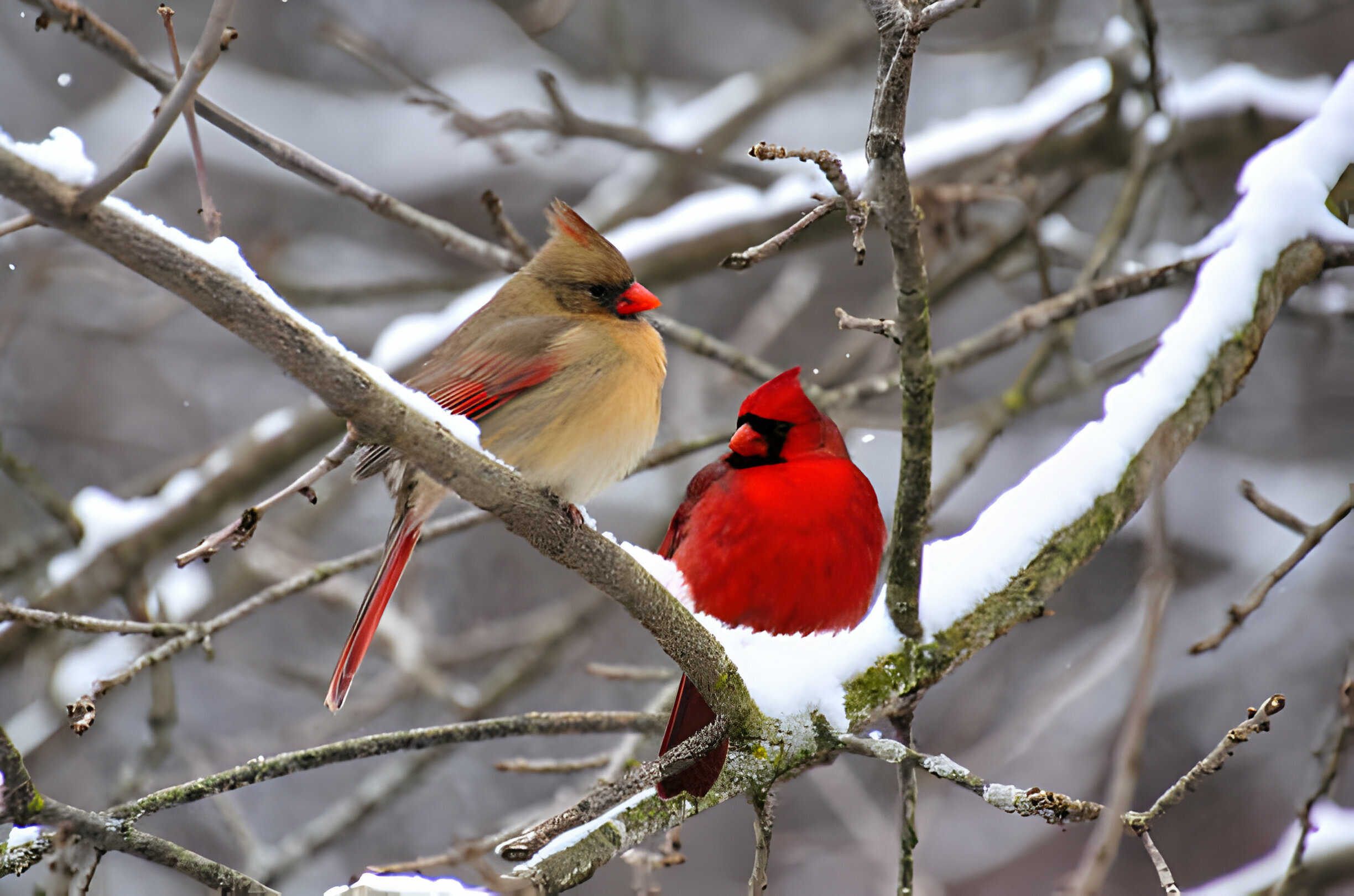Animals that start with N
Animals commonly found start with the letter N include the Nyala, Nightingale, Northern Cardinal, Narwhal, Naked Mole Rat, Newfoundland, Newt, Nile Crocodile, and Nile Perch.
1. Nyala
Nyala is a type of antelope found in southern Africa, primarily in countries such as Mozambique, Zimbabwe, and South Africa.
The Nyala (Tragelaphus angasii) is a medium-sized antelope species native to southern Africa. They are distinguished by their striking physical characteristics, with both males and females displaying notable differences in appearance.

Here are some key points about Nyala:
Physical Appearance:
- Sexual Dimorphism: Male and female Nyala display significant differences in appearance. Males are larger and more robust than females. They possess spiral-shaped horns that can grow up to 80 centimeters (about 31 inches) in length, while females lack horns.
-
Coloration: Nyala have a reddish-brown coat with white vertical stripes on the body, enhancing their camouflage in the dense vegetation of their habitat. The males have a darker coat and more distinct striping, while females and juveniles have a lighter appearance
Habitat:
-
Nyala primarily inhabit dense, dry woodlands, thickets, and bushy areas of southern African countries such as South Africa, Mozambique, Swaziland, and Zimbabwe. They prefer areas near rivers or water sources and are well-adapted to both dense forests and open woodlands.
Behavior:
- These antelopes are predominantly crepuscular, meaning they are most active during dawn and dusk. They tend to rest in shaded areas during the heat of the day to avoid the sun.
Nyala are generally shy and elusive animals, often seeking cover in dense vegetation to evade predators.
Diet:
- Their diet consists mainly of leaves, fruits, flowers, and grasses. They are selective browsers, meaning they feed on a variety of vegetation found in their habitat.
Social Structure:
- Nyala are typically seen in small groups, with females and their offspring forming herds while males tend to be solitary or form bachelor groups outside the mating season.
During the breeding season, dominant males establish territories and compete for access to females.
Conservation Status:
- Nyala are currently listed as of "Least Concern" by the International Union for Conservation of Nature (IUCN). However, localized threats such as habitat loss due to human activities and hunting pressure do exist, impacting their populations in certain regions.
2.Nightingale

The Nightingale is a small, well-known passerine bird renowned for its melodious and enchanting song. Here are some key points about the Nightingale:
Physical Description:
- Nightingales are relatively plain-looking birds with a brownish or olive-brown upper body and a paler underbelly. They typically have a reddish-brown tail.
- These birds are approximately 15 centimeters (6 inches) in length and have a compact, rounded body shape.
Habitat:
- Nightingales are migratory birds, spending the summer breeding season in Europe, North Africa, and parts of Asia, and migrating to sub-Saharan Africa during the winter.
- They prefer habitats with dense bushes, shrublands, thickets, woodland edges, and gardens, where they can find cover for nesting and feeding.
Song and Vocalization:
- Renowned for their beautiful and complex songs, Nightingales are considered one of the finest songbirds. Their song is characterized by a rich, melodious, and varied sequence of musical notes, often delivered during the night.
- Male Nightingales sing to attract mates and establish territories during the breeding season, showcasing an impressive repertoire of tunes.
Behavior:
- Nightingales are known for being secretive and shy birds. Despite their remarkable singing abilities, they can be challenging to spot due to their preference for concealing themselves within dense vegetation.
- They primarily feed on insects such as beetles, ants, caterpillars, and spiders, which they typically forage for on the ground.
Breeding:
- During the breeding season, Nightingales build cup-shaped nests on or near the ground, usually concealed within vegetation.
- They lay several eggs, usually around four to six, which are incubated by the female for approximately two weeks. Both parents take part in caring for the chicks after hatching.
Conservation Status:
- Nightingale populations have been declining in parts of their range due to habitat loss, changes in land use, and factors impacting their breeding and wintering grounds.
- As a result, Nightingales are classified as "Least Concern" by the IUCN; however, there is concern about their declining numbers in certain regions.
-
The Nightingale's renowned and captivating song has inspired poets, musicians, and artists for centuries, earning it a special place in literature and cultural traditions across various societies.
3.Nabarlek

The Nabarlek, also known as the Little Rock Wallaby or the Pygmy Rock Wallaby, is a small marsupial that belongs to the wallaby family. It is native to northern Australia, specifically in the rocky habitats of the Northern Territory and Western Australia. Here are some key points about the Nabarlek:
Physical Description:
- The Nabarlek is among the smallest wallabies, with adults typically weighing around 1 to 1.5 kilograms (2.2 to 3.3 pounds) and measuring about 30 to 35 centimeters (12 to 14 inches) in length, excluding the tail.
- They have a compact body with short, rounded ears, and a relatively short tail compared to other wallaby species.
- Their fur coloration varies, but it generally consists of shades of grey or brown, providing effective camouflage in rocky environments.
Habitat:
- Nabarleks are specialized for rocky landscapes and prefer habitats characterized by sandstone outcrops, rocky gorges, and escarpments.
- They are highly adapted to living in these rocky environments, utilizing crevices and caves for shelter and nesting sites.
Behavior:
- These wallabies are primarily nocturnal, becoming active during the night to forage for food. They are known for their agility and ability to navigate steep and rocky terrain with ease.
- Nabarleks are solitary animals and are often encountered alone or in pairs, except during the breeding season.
Diet:
- Their diet mainly consists of various plants, including grasses, leaves, and fruits, which they gather from the rocky landscape they inhabit.
Reproduction:
- Little is known about the specific reproductive habits of Nabarleks in the wild. They typically give birth to a single offspring, called a joey, which stays in the mother's pouch for a few months until it becomes more independent.
Conservation Status:
- Nabarleks are considered a species of least concern according to the IUCN Red List. However, like many other Australian marsupials, they face threats such as habitat alteration due to land development, wildfires, and potential predation by introduced species.
- The Nabarlek's specialized adaptations to rocky environments and its small, elusive nature make it a unique and intriguing species within Australia's diverse marsupial fauna.
4.Northern Cardinal

The Northern Cardinal (Cardinalis cardinalis) is a well-known and beloved bird species native to North America. Here are some key points about the Northern Cardinal:
Physical Description:
- Cardinals are medium-sized songbirds with a distinctive appearance. The males are known for their brilliant red plumage, crest on the head, and black mask extending from the face to the throat. Females, on the other hand, have a more subdued appearance, with a mostly brownish coloration, tinged with red on their wings, crest, and tail.
- Both male and female Northern Cardinals have stout red bills, which are used for cracking seeds and consuming various types of food.
Habitat:
- These birds are adaptable and can be found in a variety of habitats, including woodlands, gardens, shrublands, parks, and urban areas. They are particularly attracted to areas with dense shrubbery and trees providing cover and nesting sites.
Behavior:
- Northern Cardinals are non-migratory birds, generally staying in the same area year-round. They are often seen foraging on the ground or perched on branches, where they search for seeds, fruits, insects, and occasionally small snails.
- Their distinct whistling songs and calls are notable, and both males and females are known for their musical vocalizations, often used for territory defense and communication.
Breeding:
- During the breeding season, which typically occurs from late winter to early summer, pairs of Northern Cardinals form monogamous bonds. The female builds a cup-shaped nest using twigs, leaves, and grass, usually placed in dense vegetation or shrubs.
- The female lays a clutch of eggs, which she incubates for about 11 to 13 days. Both parents partake in feeding the chicks once they hatch.
Conservation Status:
- Northern Cardinals are widespread and abundant throughout their range, and their populations appear to be stable. They are not considered globally threatened and are listed as a species of "Least Concern" by the IUCN.
- The Northern Cardinal is admired for its striking appearance, melodic songs, and adaptability to various habitats, making it a cherished and familiar bird species across North America.
5.Narwhal

The Narwhal (Monodon monoceros) is a unique and fascinating marine mammal known for its long, spiral tusk protruding from its head. Here are some key points about Narwhals:
Physical Description:
- Narwhals are medium-sized whales and are related to belugas. They have a mottled gray or black skin that helps them blend in with their Arctic environment.
- The most distinctive feature of the Narwhal is the elongated, spiraled tusk that grows from the males' heads. This tusk is actually an enlarged tooth and can reach lengths of up to 10 feet (3 meters). Not all males have tusks, and females typically lack them.
- The purpose of the tusk is not entirely clear, but it's believed to be involved in mating rituals, as well as for sensory perception and navigation in their icy habitat.
Habitat:
- Narwhals are found in Arctic waters, primarily in the Canadian Arctic, Greenland, and the Russian Arctic. They prefer deep offshore waters and often inhabit areas covered by sea ice.
- They migrate seasonally, moving closer to the coast in summer and retreating to deeper offshore waters in the winter.
Behavior:
- Narwhals are social animals and are known to travel in groups called pods, which can consist of dozens of individuals. These pods may segregate by sex and age, with males forming separate groups from females and young whales.
- They are skilled divers, capable of diving to depths of around 1,500 meters (4,900 feet) in search of their preferred prey, which includes fish, squid, and shrimp.
Conservation Status:
- Narwhals are currently listed as "Near Threatened" on the IUCN Red List. Threats to their population include climate change, which affects their Arctic habitat and sea ice dynamics, as well as potential disturbances from increased human activities in the Arctic region.
- The trade and demand for Narwhal tusks also pose a threat, as these tusks have historically been sought after for their unique appearance.
- The Narwhal's iconic tusk and its enigmatic behavior in the Arctic waters have captured the fascination of people around the world. Studying and understanding these elusive creatures is essential for their conservation and the preservation of their unique habitat.




